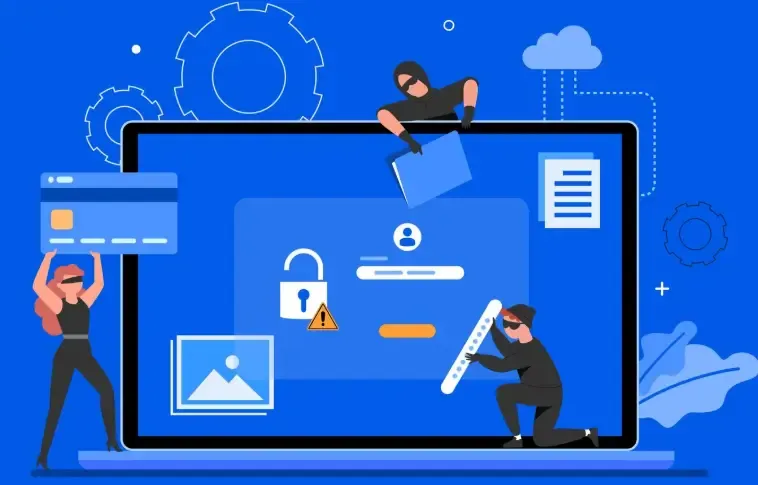Multi-Account Challenges in 2025: Browser Fingerprints & Platform Risks
As the risk control mechanisms of major platforms (social media, e-commerce, advertising platforms, etc.) continue to upgrade, operating multiple accounts in 2025 will be more challenging than ever before.
Account association, account bans, and frequent risk control issues have become the norm. This is a concern for many people; how can one avoid having multiple accounts associated with each other? Next, I will explain this in detail.

I. Why are platforms becoming increasingly strict? Key points of the upgrade of risk control mechanisms.
1. Multi-dimensional risk control integration
Early platforms might only check IP or account behavior, but now risk control systems usually combine:
IP address
Device fingerprint
Operating habits
Login Time Patterns
Behavioral Pathway
Cookie mode
As long as a certain dimension is correlated, it may be classified as "abnormal behavior" or "batch operation."
2. Browser fingerprint technology is more sophisticated.
Browser fingerprinting technology is becoming increasingly advanced. In addition to common indicators such as User-Agent, screen resolution, language, time zone, and plugins, it also measures more fundamental characteristics. Recent studies indicate that subtle differences in WebAssembly can achieve extremely high fingerprinting accuracy. Therefore, even if two accounts use the same model device, they may still be identified as the same operator.
3. The risk of IP reuse intensifies.
In multi-account operations, if multiple accounts share the same IP, especially when logging in or performing actions at similar times, the platform is likely to identify them as linked accounts.
Data center IPs and public proxy IPs are at higher risk because these IPs are often used by machines and are more frequently flagged by platforms.
4. Behavior characteristic analysis is more intelligent.
The platform risk control system has the ability of "behavior template identification":
Capture mouse trajectory
Click time interval
Time spent on page
Scrolling speed
By constructing the "behavior profile" of each account, if multiple accounts exhibit highly similar behavior patterns, it is also容易被关联.
5. Model Learning and Big Data Accumulation
The platform has accumulated a vast amount of real user behavior data, using model training to identify "anomalous patterns" and "suspicious groups." Even if users intentionally disperse their risks, they may still be identified by new model rules.
In summary, the difficulty of operating multiple accounts will significantly increase in 2025, and relying solely on traditional methods will be challenging. More caution and precision will be needed in areas such as environment isolation, fingerprint spoofing, and IP strategies.
2. Why is Browser Fingerprint crucial?
Browser fingerprinting, also known as device fingerprinting, refers to a combination of a series of "characteristic values" left by a browser environment when accessing a website, used to identify whether a device or environment has visited or is associated with a site.
The platform's risk control system integrates user browser features to create a fingerprint profile, which is used to compare whether multiple accounts share or are highly similar. Once the fingerprints of two accounts highly overlap, they can easily be judged as associated accounts or even have their accounts suspended. Therefore, achieving "fingerprint isolation" in multi-account operations becomes a key strategy.
Three,ToDetect Browser Fingerprint DetectionTools: Functions and Advantages
More professional — Compared to pure "browser fingerprint detection websites," ToDetect focuses more on the needs of "multi-account operators," providing finer-grained similarity detection and risk alerts.
Customization comparison — Users can upload or save "fingerprint templates" for horizontal comparison with their other account environments.
Early warning and monitoring function — supports long-term monitoring, not just one-time detection.
Compatibility and Usability — User-friendly interface and intuitive操作, suitable for non-technical individuals to get started quickly.
Data updates are timely — With the evolution of the platform's risk control mechanism, ToDetect can continuously update its "fingerprint database" and "risk models" to ensure that detection strategies remain up to date.
In actual multi-account operations, it is recommended to conduct a comprehensive check using ToDetect every time a fingerprint environment is created or switched, to confirm whether there are high-risk overlaps in the environment, and to make timely adjustments.
IV. How to Build an “Invisible” Multi-Account Environment? Practical Strategies
1. Device + Browser Environment Isolation
Use a fingerprint browser (Antidetect browser / anti-association browser) to create independent environments for each account or group of accounts, with each environment having its own fingerprint, cookies, cache, etc., without interfering with each other.
2. IP isolation prioritizes local/residential IPs.
Assign independent IPs to each environment or account, preferably residential IPs or a dynamic IP pool.
Avoid using public proxies or data center IPs, as these IPs are more likely to be flagged by the platform.
3. Behavioral Differentiation
Simulate real user behavior: there should be differences in the operation rhythm of different accounts, login time periods, page browsing sequence, clicking intervals, scrolling speed, etc.
Avoid completely synchronized operations across multiple accounts.
4. Control the frequency of fingerprint parameter adjustments.
Do not frequently modify the fingerprint parameters of the same account, otherwise the platform may detect an anomaly of "sudden device changes."
Fingerprints can be fine-tuned (such as adjusting for proxy, timezone, and language), but major changes should be avoided.
5. Regular Inspection and Cleaning
Regularly use ToDetect (or other tools) to detect the fingerprint similarity of different environments to timely identify overlap risks.
Clean up unnecessary accounts and inactive accounts to reduce operational burden.
Five,Browser fingerprint detectionFrequently Asked Questions (FAQ)
Q1: Can using a fingerprint browser + ToDetect guarantee 100% no detection of association?
A: No. Even with the most advanced fingerprint browsers and detection tools, the platform may still assess associations through other dimensions such as behavioral trajectory, account information, payment method, phone number, and device hardware identifiers. Fingerprinting tools can only reduce the risk of association; they cannot completely eliminate the possibility of monitoring.
Q2: Is it enough to use only ToDetect for detection, without using a fingerprint browser?
A: Not recommended. ToDetect is a "detection" tool, while fingerprint browsers/anti-association environments are "isolation/masking" tools. Only detection without isolation still carries risks of exposure; only isolation without detection may also result in unknown overlap vulnerabilities.
Q3: Can multiple accounts use the same proxy IP?
A: Not recommended. Even if the proxy IP is set to "independent" (such as different ports or different proxy users), the platform may still detect the likelihood of multiple accounts frequently using the same IP, especially when there is a significant overlap during login or operations.
Q4: How to handle the high-risk overlap displayed after detection by ToDetect?
A: You can try changing the fingerprint parameters (such as time zone, language, screen resolution, plugin settings, WebGL/Canvas templates, etc.), or changing the IP, and then test again; if necessary, recreate an environment. The key is to ensure that the "similarity" between the environment and the environments of other accounts is low enough.
Q5: Will system upgrades/browsers updates disrupt the fingerprint environment?
A: It's possible. Updates to the system, browser, graphics card drivers, plugins, etc. may introduce slight changes in fingerprint characteristics, leading to environmental shifts or overlaps with other environments. It is recommended to back up the environment before updates and use ToDetect or similar tools to check for safety after the update.
Conclusion
The multi-account operation in 2025 does face higher technical barriers:
The platform's risk control mechanism is becoming increasingly refined.
Fingerprint recognition technology is continuously upgrading.
Relying solely on traditional methods such as "changing IP + changing account" is no longer sufficient.
Browser fingerprint de-sensitization, environmental isolation, IP policies, and behavioral differentiation have all become essential strategies.
ToDetect browser fingerprint detection tool provides risk assessment, overlap comparison, and early warning monitoring for each of your environments, helping you promptly identify potential associated risks and make adjustments. With excellent fingerprint browsers, independent IPs, and differentiated operations, you can navigate the multi-account operation road more steadily and further.



